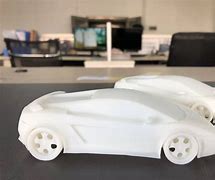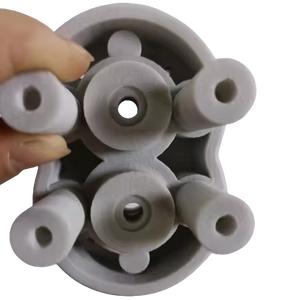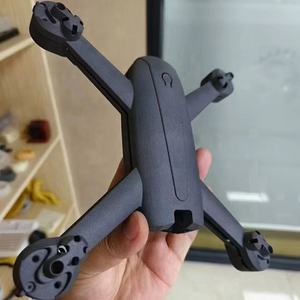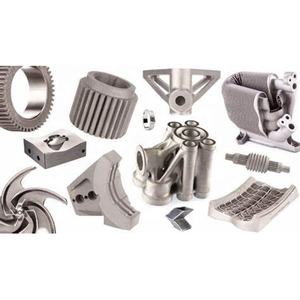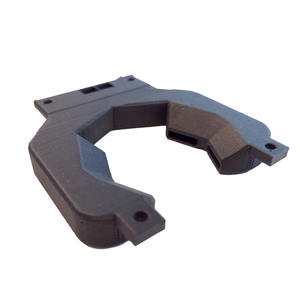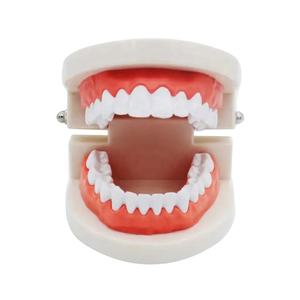Discover a professional 3D printing powder supplier
Title: Plastic Pistols and Metal Detectors: Can Ghost Guns Hide in Plain Sight?
(are 3d printed guns caught by a metal detector)
1. What Are 3D Printed Guns and Metal Detectors?
Think of a 3D printed gun like building a toy gun, but with plastic and a fancy computer printer. Instead of wood or metal, layers of plastic or other materials get stacked up to form the parts. Some people call them “ghost guns” because they are hard to track. A metal detector is a common security tool. You see them at airports, concerts, and schools. They work like a magic wand for metal. They send out a magnetic field. When metal enters that field, it disrupts it. The detector senses this disruption and makes a sound or lights up. It tells security people, “Hey, there’s metal here!” They are crucial for finding weapons made of steel or other metals.
2. Why Does Detecting 3D Printed Guns Matter?
Security is the big reason. Places need to know if someone is bringing in a weapon. Traditional metal guns are easy for detectors to find. They are mostly metal. 3D printed guns are different. They can be made mostly from plastic. Plastic doesn’t trigger a standard metal detector. This creates a problem. If someone can make a gun out of plastic and sneak it past security, that’s dangerous. It bypasses a key safety layer. This matters for everyone’s safety in public spaces. Law enforcement worries about untraceable weapons. Security teams need to know the limits of their tools. Understanding this gap helps find solutions.
3. How Do Metal Detectors Handle 3D Printed Guns?
This is the core question. The answer depends heavily on the gun’s materials. A metal detector only finds metal. If a 3D printed gun is made entirely from plastic, ceramic, or other non-metallic stuff, it likely won’t set off the detector. But here’s the catch: most functional 3D printed guns need some metal parts. The firing pin, the barrel liner (to handle the explosion), springs, screws, and even the ammunition itself are usually metal. Even a tiny piece of metal can be enough. Modern detectors are very sensitive. They can find small metal objects like a belt buckle or coins. So, if the plastic gun has any metal inside it, or metal bullets, the detector probably will catch it. The plastic parts themselves hide nothing. Only the metal parts trigger the alarm.
4. Applications and Real-World Security Challenges
This issue directly impacts security screening. Airports are the most obvious place. Security there relies heavily on metal detectors and X-ray machines. X-rays can see different materials, including plastic shapes. Security staff are trained to spot suspicious items on X-ray screens, like a plastic gun shape. But metal detectors are the first line of defense. If a plastic gun has no metal at all, it might pass the metal detector. Then, security depends entirely on the X-ray operator spotting it. This is a challenge. Other places like government buildings, schools, and events also use metal detectors. They face the same risk. The trend towards more accessible 3D printing and stronger plastic materials makes this a growing concern. Security protocols need constant updates.
5. FAQs About 3D Printed Guns and Metal Detection
Can a plastic gun fire without metal? Yes, technically. Single-shot designs exist using plastic parts only. But they are very weak, dangerous to the user, and unreliable. Firing more than once usually requires metal springs or parts.
Do all 3D printed guns have metal? Almost all functional ones do. The extreme heat and pressure of firing a bullet quickly destroy plastic barrels unless reinforced with metal liners. Reliable firing mechanisms need metal springs.
Will a metal detector find the plastic? No. Metal detectors only detect metal. The plastic parts are invisible to them.
What about the bullets? Standard bullets are metal (lead core, copper jacket). They will definitely trigger a metal detector, even if the gun itself is plastic.
Are there plastic detectors? Not like metal detectors. Security uses other methods. X-ray machines are key. They show the density and shape of objects. A plastic gun shows up as a distinct shape. Advanced imaging scanners and trace detection (swabbing for explosives residue) are also used. Trained personnel looking for suspicious behavior is vital.
(are 3d printed guns caught by a metal detector)
Is this a big threat now? Widespread use is currently low. Making reliable, safe 3D printed guns is difficult and requires skill. But the technology is improving. Security experts monitor it closely. The potential risk means security cannot ignore it. The possibility exists.


